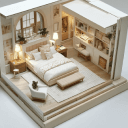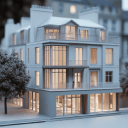Designing a room used to mean wrestling with tape measures, mood boards, and rough sketches. Today, you can stand inside a photorealistic model of your future space before buying a single can of paint — all thanks to Arcadium 3D, a free, browser-based virtual room designer that puts pro-level tools into every DIY decorator’s hands.
Whether you’re a homeowner planning a renovation, a renter rearranging your apartment, or a professional interior designer prepping a client presentation, Arcadium 3D empowers you to transform ideas into immersive 3D designs with ease. In fact, inspiration can strike at 10 p.m. on a Tuesday — and you won’t have to wait weeks for drawings when you can open your browser and start designing instantly.
This article will explore why Arcadium’s free virtual room designeris a game-changer for homeowners, renters, and pros alike, and how anyone can achieve stunning results without expensive software or specialized training.
Virtual Room Designer
Why Use a Virtual Room Designer?
A virtual room designer is an online tool that lets you create and visualize interior designs in 3D. Unlike traditional graph paper sketches or even 2D floor planners, a 3D room designer gives you a true-to-life sense of space, scale, color, and lighting. You can walk through your planned room virtually, see how furniture fits, experiment with décor, and make changes on the fly – all before committing in real life. Here’s why this is incredibly beneficial for different people:
Homeowners:
If you own your home, you know that renovations and decor changes can be costly and time-consuming. A virtual designer allows you to play with layouts and styles risk-free. You can test out that open-concept living room or new bedroom color scheme digitally and avoid costly mistakes.
In fact, studies show that using 3D visualization boosts confidence in design decisions – one survey found 78% of clients feel more confident in project outcomes after seeing a 3D mode. As a homeowner acting as your own “client,” seeing your ideas in 3D means fewer second thoughts and more certainty before you grab the hammer or paintbrush.
It’s like getting a crystal ball for your renovation – you’ll know exactly how that built-in bookshelf or kitchen island will look and fit before you commit.
Renters:
Renters might not be doing major renovations (no knocking down walls in a rental!), but they still benefit enormously from a free room planning tool. With limited freedom to alter the structure, renters focus on furniture layout and décor.
Using a virtual room designer, you can experiment with furniture arrangements in a new apartment, figure out if that sectional sofa will block the doorway, or see how a rug and artwork will tie the room together. Because Arcadium 3D is free and online, you don’t need to invest in any software – ideal for renters on a budget.
You can save multiple layouts for your space and even overlay different interior styles using AI (more on that later) to find a look that feels like home. When it’s time to move, you can plan the setup of your next place ahead of time as well.
In short, renters can achieve a designer-worthy look in their temporary space without permanent changes, using virtual design to maximize what they have.
Pros (Interior Designers, Realtors, Contractors):
Professionals have traditionally relied on complex CAD software or expensive suites for 3D design. Arcadium 3D changes the game by offering professional-grade tools in a lightweight package that’s fast and collaborative. As an interior designer, you can flesh out concepts in Arcadium within minutes and share a 3D walkthrough with clients via a simple web link.
This means clients can view (or even edit) the design on their own device, increasing engagement and speeding up approvals. In fact, Arcadium is “entirely online” so you can share plans instantly via URL, and clients can take a virtual walking tour without installing anything.
For real estate professionals or staging experts, a free tool like this is perfect for creating virtual staging or demonstrating potential improvements to a space. And for contractors or architects, Arcadium serves as a quick visualization aid for communicating ideas to homeowners who might not read blueprints.
The bottom line: professionals can save time and iterate faster – users report up to 30% reduction in project turnaround times when using 3D modeling tools – while impressing clients with interactive models rather than static drawings.

Arcadium 3D: Fast, Easy, and Packed with Features
Arcadium 3D’s
virtual room designer stands out as a best-in-class solution because it combines power with simplicity. It was built to democratize interior design, making advanced 3D modeling accessible to everyone from novices to experts. Let’s look at what makes Arcadium 3D special:
Completely Browser-Based & Free:
Arcadium runs entirely in your web browser with nothing to download or install. You can launch it on any computer (Windows, Mac, or even a tablet) and get designing immediately – no high-end hardware needed. Despite being browser-based and free to use, it doesn’t skimp on capabilities.
As one architect put it, “Arcadium is a fantastic tool for getting three-dimensional ideas across to clients quickly. Other 3D software can be very time consuming and fiddly. Because it’s online, updates are automatic and you’re always using the latest version.
There are no license fees, subscriptions, or paywalls for the core features – homeowners and students can use it without cost, and pros can leverage it without adding overhead. This accessibility is a huge differentiator; Arcadium provides SketchUp-level power without SketchUp-level learning curves or price tags.
Fast and Intuitive Design Experience:
Arcadium prides itself on being extremely user-friendly. Even if you’ve never tried 3D modeling before, the interface is designed for beginners to master in minutes. For instance, drawing a floor plan is as simple as clicking to create walls, and dragging doors or windows into place.
The controls for moving or rotating objects are straightforward, and helpful guides snap things into alignment. This ease of use has earned Arcadium high praise; designers call it “the fastest and most intuitive” interior design software they’ve used. Unlike heavy professional programs that require days of training, Arcadium 3D lets you start creating right away – yet it’s also incredibly precise when you need it.
You can enter exact dimensions for walls or furniture, ensuring your virtual room matches reality down to the inch. Speed matters when inspiration strikes, and Arcadium delivers: you can create a complete room design in a single evening instead of waiting weeks for drafts.
Extensive Furniture Library & Smart Components:
One of Arcadium’s strongest advantages is its large in-built library of furniture and decor items. You’ll find thousands of pieces at your fingertips – from sofas, beds and dining sets to lamps, rugs, plants, and artwork – in a range of styles (modern, classic, minimalist, etc.).
This means you can furnish your virtual room with realistic items and see how different choices look. More impressively, many objects are dynamic and parametric. For example, you can stretch a bookshelf or dining table and it will automatically add or adjust shelves and legs accordingly.
Need that couch a little wider? Just scale it, and the cushions reposition themselves. These smart components save hours of tweaking – “custom cabinetry takes seconds, not hours,” thanks to auto-adjusting parts. The furniture and fixture models also come in standard sizes, which helps ensure that what you design can be sourced or built in real life.
You can even change material finishes on objects (fabric color, wood type, etc.) to match your desired look. The huge library and flexible components make it fun to experiment with different furnishings until you find the perfect fit for your space.
Instant 3D Visualization and Walkthroughs:
Arcadium’s real-time rendering engine lets you switch from 2D floor plan to 3D perspective with a click. At any moment, you can pop into a first-person view and “walk” through your design as if you’re inside it. Move a sofa in the floor plan, and you’ll see it update position in 3D immediately.
Adjust the lighting, and the shadows and ambiance update instantly. This instant feedback makes the design process highly interactive and helps you judge scale and flow accurately – for example, you can ensure there’s enough space to walk around the bed or that a door isn’t blocked. The immersive walkthrough feature is not only useful for designers; it makes it easy to present to others.
Arcadium’s virtual walkthroughs give a realistic sense of the room’s ambiance, lighting, and proportions, which is “far better than 2D floor plans” for conveying a design. You (or your client) can use simple keyboard controls (WASD keys or arrow keys) to navigate the room virtually. It’s like a game engine, but focused on interior spaces – an exciting way to experience a design before anything is built.
AI-Powered Style Transformations:
Here’s a feature that truly sets Arcadium apart from many competitors: integrated AI image generation for interior design. After you’ve created a 3D room layout, you can capture a view and then let Arcadium’s AI features re-imagine it in different styles or even photorealistic detail.
For instance, you can design a basic living room layout, then have the AI generate a photorealistic rendering of that room as a modern Scandinavian-style lounge, or as a cozy rustic cabin den. You could also try stylistic transformations – e.g. apply a “watercolor” effect or a sketch-like filter to create concept art for the space.
In practical terms, this means you don’t need to be a rendering expert to get a beautiful image of your design; the AI can produce high-quality visuals or alternate looks in seconds. It’s an amazing way to overlay multiple design styles on your room and explore different décor themes virtually. Unsure if you want a sleek modern vibe or a farmhouse look?
Arcadium lets you visualize both (and more) with minimal effort, using AI to fill in textures and details. This capability to generate realistic images and style variations is like having a designer’s assistant ready to mock up concepts for you.
It’s especially useful for professionals preparing mood boards, or for any user who wants to see a “what if?” scenario (e.g. what if I turn my neutral office into a colorful bohemian space?). With Arcadium’s AI tools, the only limit is your imagination.
Collaboration and Sharing via Link:
When your design is ready for feedback or bragging rights, Arcadium makes sharing it incredibly simple. Every project can be shared just by sending a URL – no files, no software required on the other end. Your friend, client, or family member can click the link and instantly view the design in 3D on their device, and even take the virtual walkthrough themselves.
This seamless sharing is perfect for collaborative design: a couple designing their living room can swap ideas online, or a designer can let a client explore the space at their own pace remotely. Because everything is online, you’re always looking at the latest version of the design – stakeholders can’t mix up “which file is newest” or run into compatibility issues.
Arcadium effectively turns your design into a weblink, almost like a mini website of your future room, that you can show to anyone. And if you do need a traditional output, Arcadium has you covered too: you can generate 2D floor plans, elevations, or screenshots from your 3D model to include in reports or mood boards.
These can be used for getting contractor estimates or planning furniture shopping lists, for example. But the ability to simply send a live 3D model link is arguably the most convenient way to share design ideas – no more emailing large PDFs or requiring specialized viewers. Arcadium 3D was clearly built with collaboration in mind, and it shows.
Easiest Learning Curve:
For all its capabilities, Arcadium 3D remains remarkably easy to learn. It was specifically noted as a tool that “appeals to home-owners without any experience with modeling tools” by focusing on simplicity. The interface uses plain language (e.g. buttons like Add Wall, Add Furniture), and there are helpful tutorials to get you started on your first room.
Many users are able to get the hang of it after one project – and Arcadium even provides templates and example rooms if you prefer to start from something pre-made. Compared to pro software that can take weeks of training, Arcadium’s approach is refreshing. It truly lowers the barrier so anyone can design a room in 3D, regardless of background.
As evidence of how user-friendly it is, one Reddit interior design enthusiast wrote: “Arcadium… It’s the fastest and most intuitive. It’s also free and online which makes client communications really easy.” This mix of speed, simplicity, and powerful results is why Arcadium has quickly become a go-to choice for beginners and seasoned designers alike.
Virtual Room Designer
Designing Your Room in 3 Easy Steps
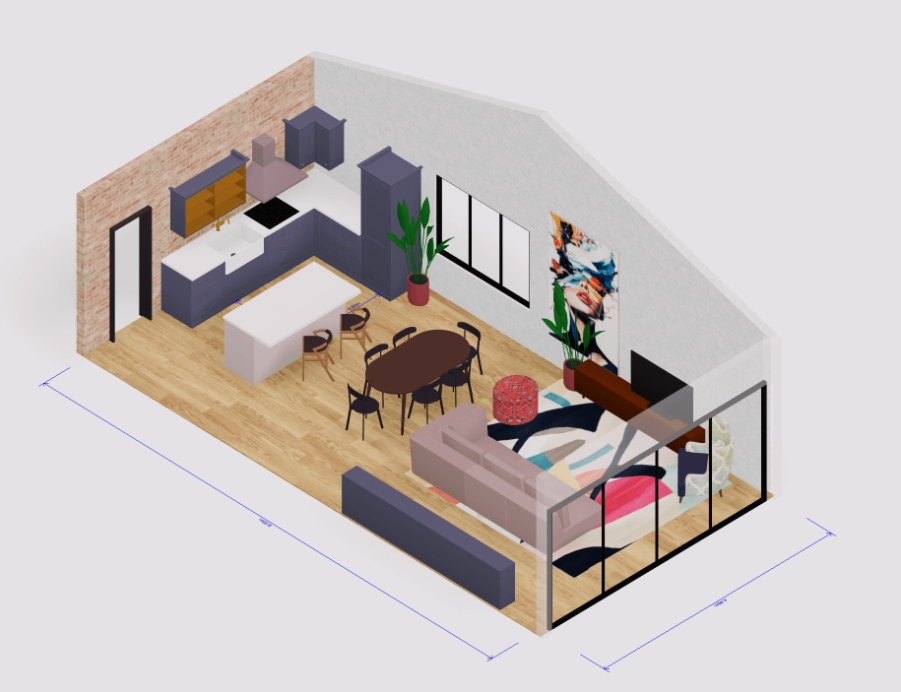
So, how does one actually
create a room with Arcadium 3D’s free tool
? The process is quick and can be broken down into three basic steps:
1. Create Your Space:
Open Arcadium in your browser and start a new project (it’s free to sign up and start designing). Begin in the 2D view by drawing your room’s floor plan. Simply click to draw walls and define the room’s shape – you can make it a simple rectangle or include details like nooks and angled corners by adding nodes.
Set exact dimensions for walls to match your real room measurements, or just drag and adjust visually. Then drop in structural elements like doors, windows, and openings from the library. You’ll end up with an accurate, to-scale floor plan which forms the foundation of your design.
2. Furnish and Decorate:
Switch to the furniture library and start populating your room with major pieces. Arcadium’s library has everything from sofas and beds to desks, appliances, decor and more – you can search or browse by category. For a living room, for example, you might drag out a sofa and coffee table first (your main “anchor” pieces). For a bedroom, you’d start with the bed, etc.
Once the big items are placed, layer in additional furniture (shelves, TV stand, dining chairs – whatever the space needs) and decor like rugs, lamps, plants, or art. Use simple drag-and-drop to position items; alignment guides and snap-to features help keep things neatly arranged.
You can click any object to resize it or change its style (e.g. swap one couch model for another). Don’t forget to adjust materials and colors – change wall paint with a few clicks, test different flooring (hardwood vs. carpet), and try out various color palettes.
Because everything updates in real time, you can experiment freely: move furniture around, duplicate the room to compare two versions, or try bold design ideas knowing you can undo easily. This is the step where your personal style comes to life in the model.
3. Visualize and Share:
Now the exciting part – see your design in action. Toggle to the 3D view and take a virtual walkthrough of the room. Use the on-screen control or keyboard to move through the space as if you’re physically there. Check the sight-lines and ensure the layout feels good (does anything block the windows? Is there enough clearance to open that cabinet door?).
Arcadium’s lighting tool allows you to simulate different lighting conditions, so you can, for instance, dim the lights to see a cozy evening atmosphere or brighten them to daylight levels. Once you’re happy with the design, it’s time to share it. Click the Share button to get a shareable link.
You can send this link to a friend, post it on social media, or include it in an email to a client. Anyone who opens the link can view your design in 3D immediately, even if they’ve never used Arcadium. This makes sharing your ideas effortless – no need for others to download large files or have special software. If it’s a collaborative project, your recipient could even duplicate the design on their end and make their own tweaks.
Arcadium also lets you export images or download a 2D floor plan PDF if needed. But the live 3D link is the most interactive way to communicate your vision, truly showcasing the design in a way traditional plans never could.
With these three steps, you can go from a blank canvas to a fully furnished virtual room in very little time. As one interior design expert noted, Arcadium “delivers professional-grade space-planning tools that anyone can master in a single evening.” It’s hard to overstate the empowerment this gives everyday people in shaping their living spaces.
Transform Your Space – Anyone Can Do It with Arcadium 3D
Perhaps the most remarkable aspect of Arcadium 3D is how it enables anyone to achieve transformations that previously required professional help. You don’t need to hire an interior designer to map out ideas or spend weeks learning complicated software. Arcadium puts the power directly in your hands.
For a homeowner, this might mean finally visualizing that dream kitchen remodel with new cabinets and lighting – and then confidently showing your contractor exactly what you want. For a renter, it could be the difference between living in a chaotic, mismatched apartment versus a well-thought-out cozy home; you can try dozens of furniture layouts digitally until you find the optimal one that maximizes your small space.
And if you are a professional, Arcadium can enhance your workflow by enabling rapid prototyping of ideas and smooth collaboration with clients. It’s telling that some architects and designers have even switched over from heavyweight tools: “I’ve now switched to Arcadium from SketchUp. It’s far faster and easier to ideate and communicate with clients,” said one user review.
The ability to transform a blank room into a personalized design is practically at your fingertips. Arcadium’s motto could well be “try it now, see it now.” As soon as you have a spark of an idea – What if we made the spare room into a home office? – you can fire up Arcadium’s room designer and start playing with the concept in a realistic 3D model.
Move the virtual furniture, swap the colors, knock out that non-load-bearing wall (virtually) to see a more open layout…you have creative freedom with none of the real-world risk. Many users find this process not only productive but genuinely fun – it’s a bit like an adult sandbox or an interior design game that produces real, usable plans for your life.
Arcadium’s own users have called it “wonderfully intuitive” and even “enjoyable” to use, noting how they “spent hours… and enjoyed every second”. When a tool makes the journey as enjoyable as the destination, you know it’s something special.
Importantly, Arcadium 3D isn’t just a toy or a novelty – it delivers professional results. The accuracy and level of detail are sufficient for real-world execution. You can take measurements from your model to the hardware store, share the design with a contractor for quotes, or use the generated floor plans to guide your DIY projects. And because Arcadium is constantly evolving (with features like the AI visualization rolling out), you’re using a state-of-the-art platform that leverages the latest tech in design and graphics.
It’s also community-tested: thousands of people, including professionals, use Arcadium and provide feedback, which helps refine the tool. The result is a reliable, robust designer that you can trust for projects big and small.
So whether your goal is to reimagine a single room or map out an entire home, Arcadium 3D offers a free and frictionless way to bring those visions to life. In minutes, you can transform a blank
room layout
into a vivid 3D experience. And in the long run, you might transform your approach to home design altogether – making it a more confident, creative, and collaborative process. Give it a try and join the growing number of homeowners, renters, and professionals who have discovered what’s possible when advanced design power meets everyday simplicity.
Learn More About: Room Design Ideas to Inspire Your Next Layout
FAQ – Free Virtual Room Designer Basics
Q: How do I start designing my room online for free?
To begin, choose a free virtual room design tool like Arcadium 3D. There’s no software to install – just open Arcadium in your web browser and create a free account (or even use it as a guest). Start a new project and outline your room’s dimensions by drawing walls and adding doors/windows.
Then, fill the room with furniture and decor from the built-in library. Arcadium’s intuitive controls will help you position items and experiment with layouts. When you’re ready, switch to 3D view to take a virtual tour of your design, and share it with others via a link.
Q: I’m not a professional designer – can I still use Arcadium 3D effectively?
Absolutely. Arcadium 3D is beginner-friendly by design. It was created to be easy enough for anyone to use, even with no prior experience in interior design or 3D modeling. The interface is visual and intuitive (for example, you drag and drop furniture, and use simple mouse motions to move or rotate things).
There are also tutorials and templates to guide new users. Many beginners find they can start designing within minutes. In short, you do not need an interior design background – Arcadium provides simple tools to help anyone design a room with confidence.
Q: Is Arcadium 3D really free? Are there any hidden costs?
Yes – Arcadium 3D’s core features are completely free to use. You can create an account and start designing without any credit card, and there are no time limits on free use. The platform makes money through optional upgrades or professional plans, but all the essential functionality (creating models, using the furniture library, generating walk-throughs, sharing via link, etc.) comes at no cost.
There are no hidden fees or forced subscriptions for general users. This makes Arcadium an excellent choice for homeowners and renters who want a powerful tool without the price tag. (Always check the official Arcadium website for the most up-to-date information on pricing or any premium features.)
Q: What do I need to run Arcadium’s virtual room designer?
You just need a device with an internet connection and a modern web browser (like Chrome, Firefox, or Safari). Since Arcadium is browser-based, it works on both Windows and Mac computers, and even on capable tablets. There’s no need for a high-end graphics workstation;
Arcadium is optimized to be lightweight. It does use 3D graphics, so a very old computer might struggle, but any relatively recent computer or iPad should run it smoothly. You don’t need to download any app or software – simply go to the Arcadium website and launch the designer from there.
Because everything is online, you can also access your designs from multiple devices (for example, design on your laptop at home, then show it on your work computer or tablet via the cloud).
Q: How is Arcadium 3D different from other free room design tools (like Planner 5D, RoomSketcher, etc.)?
While several free or freemium room design apps exist, Arcadium 3D differentiates itself through its combination of speed, ease-of-use, and advanced features. For one, Arcadium runs entirely in the browser with no installs, similar to some others, but it offers more powerful modeling capabilities (parametric furniture, real-time 3D walkthrough) that many basic tools lack.
It also integrates AI-powered visualization, which is quite cutting-edge – you won’t find that in most competitors. Arcadium’s interface is noted to be extremely intuitive and fast, often praised as more user-friendly than older tools. In fact, Arcadium is frequently cited as a top choice among free online room designers, alongside names like RoomSketcher and Planner 5D, but it brings pro-level features without sacrificing simplicity.
Additionally, Arcadium’s one-click share via URL for interactive 3D models is a standout feature for collaboration, whereas some other platforms might only export static images unless you pay for a premium. Overall, Arcadium aims to give you professional results with consumer-level ease, setting it apart in the room design software landscape.
Q: Can I use Arcadium 3D to design an entire home, or is it just for single rooms?
You can absolutely design multiple rooms or even an entire floor plan of a home. Arcadium’s tools allow you to create complex layouts – you can draw several rooms, hallways, etc. within one project. Many users design full houses (including multiple floors) by modeling room by room and piecing them together.
The interface and features work just as well for a whole house as for a single room – you have the same furniture library and structural components at your disposal. For practicality, designing one room at a time and then combining them (or using Arcadium’s house design mode if available) might be easiest.
Keep in mind that detailing a very large model (like a 4-bedroom house fully furnished) will be more time-consuming, but it’s certainly possible. Because Arcadium was built as a general 3D house design tool, it’s flexible enough to handle projects ranging from a tiny studio apartment to a full home layout.
Q: How realistic are the designs that Arcadium 3D produces? Can it help me see what my room will really look like?
Arcadium 3D strives for a balance between ease and realism. The on-screen 3D models give a good sense of space and layout – you’ll see accurate dimensions, furniture scale, and basic textures. While the real-time view is somewhat stylized (to keep things fast), the integration of AI visualization means you can generate photorealistic images of your room with a few clicks.
This allows you to see extremely life-like renderings of your design, including realistic materials, lighting, and shadows as if it were a high-quality 3D render. It’s like having a built-in renderer. So yes, Arcadium can help you see what your room would actually look like to a impressive degree.
Even without using the AI feature, the ability to do a virtual walkthrough in the designed space greatly enhances realism – you can view it from eye level, which makes it much easier to imagine yourself in the finished room. Many users are surprised at how closely their final real-life result matches what they designed in Arcadium, especially when they fine-tune colors and furnishings that are available in reality.
Q: How can I share my designs or get feedback using Arcadium?
Sharing designs in Arcadium is one of its strong suits. At any point you can hit the Share button and Arcadium will generate a unique URL link to your project. Anyone with that link can view your room design in their browser – they don’t need an account or any software.
This makes it incredibly easy to get feedback: you might send the link to a friend (“Do you like this living room layout?”), to a family member, or if you’re a pro, to a client for review. The person you share with can take a virtual tour of the space on their own and really experience the design.
They can’t accidentally break anything in your design by viewing it, so it’s safe to share widely. If you want someone to be able to edit or tweak the design, you could have them sign up and duplicate the project on their end, or you collaborate by making changes while on a call, for example.
Additionally, Arcadium allows you to export images or plans if needed (for instance, you could include a snapshot in a report or printout). But most people find the live 3D link to be the coolest way to share. No more sending static pictures back and forth – a shared Arcadium link lets everyone literally stay on the same page (or rather, same virtual room).
Q: Who is Arcadium 3D’s room designer for?
In a word: everyone. The tool was designed to be useful to a broad range of users. If you’re a homeowner, Arcadium is for you – it helps you plan renovations, decor updates, and new layouts without costly guesswork.
If you’re a renter, it’s for you too – you can plan and decorate your space creatively even if you can’t make structural changes, and you’ll avoid buying furniture that doesn’t fit by testing it virtually. If you’re an interior design professional or architect, Arcadium can accelerate your concept development and client presentations. It’s also handy for real estate agents or home stagers to virtually furnish empty listings.
Even contractors or builders find it useful to clarify project visions with clients. Because it’s free and easy, hobbyists and students benefit as well – you can use it to design a dream room just for fun or practice interior design skills. In summary, Arcadium 3D is for anyone who wants to visualize interior spaces in 3D – from total beginners to seasoned pros. Its features scale to your needs, and its accessibility ensures no one is left out from designing their perfect space.
Virtual Room Designer


 All training, tips and articles
All training, tips and articles
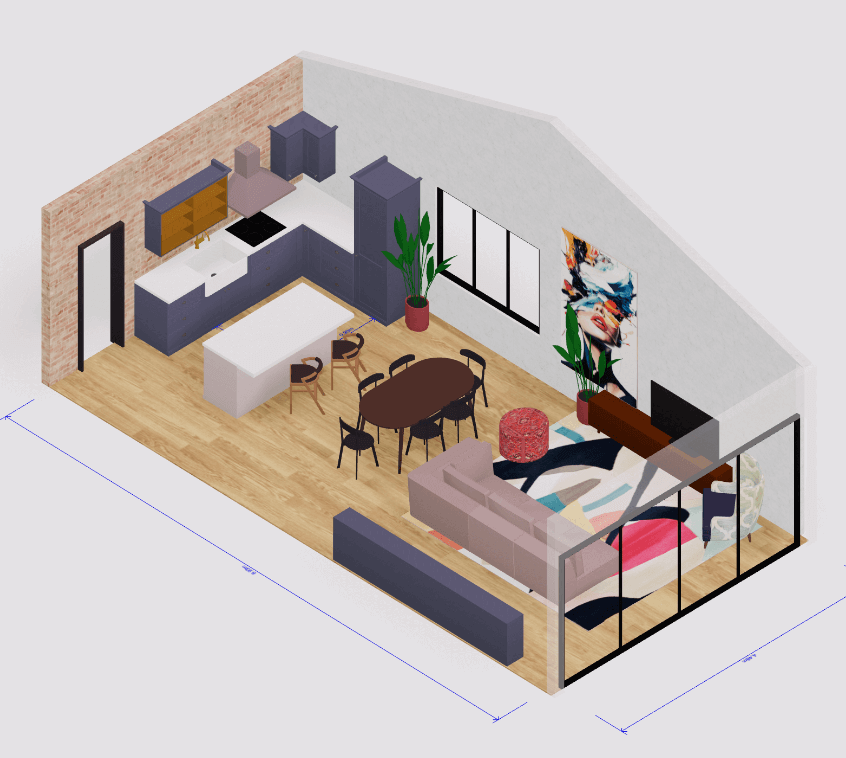 3D house design tool
3D house design tool
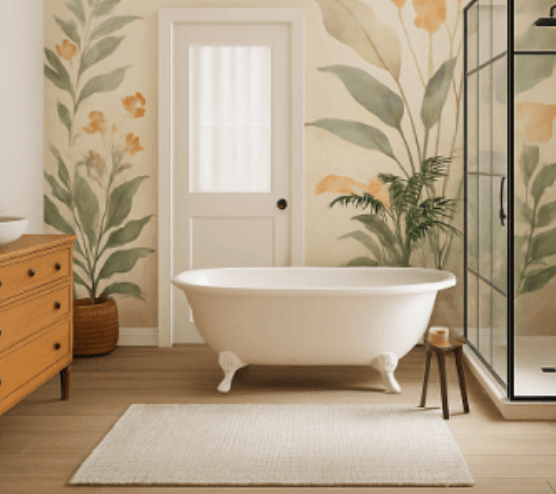
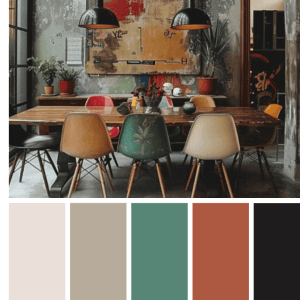 Color palette generator
Color palette generator
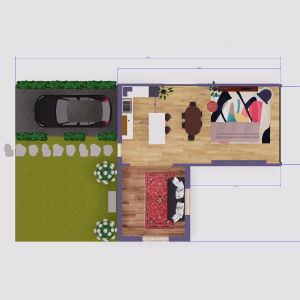 Floor plan creator
Floor plan creator
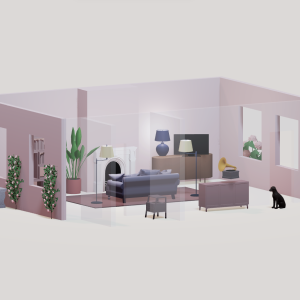 Interior design app
Interior design app
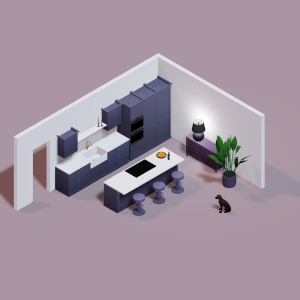 Kitchen design tool
Kitchen design tool
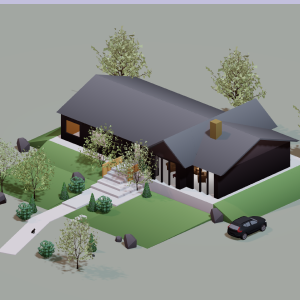 House design software
House design software
 Room designer
Room designer
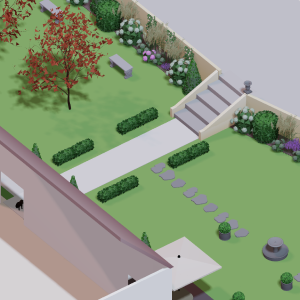 Landscape design software
Landscape design software
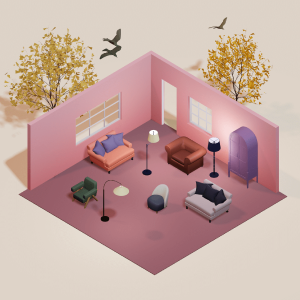 Bedroom design
Bedroom design
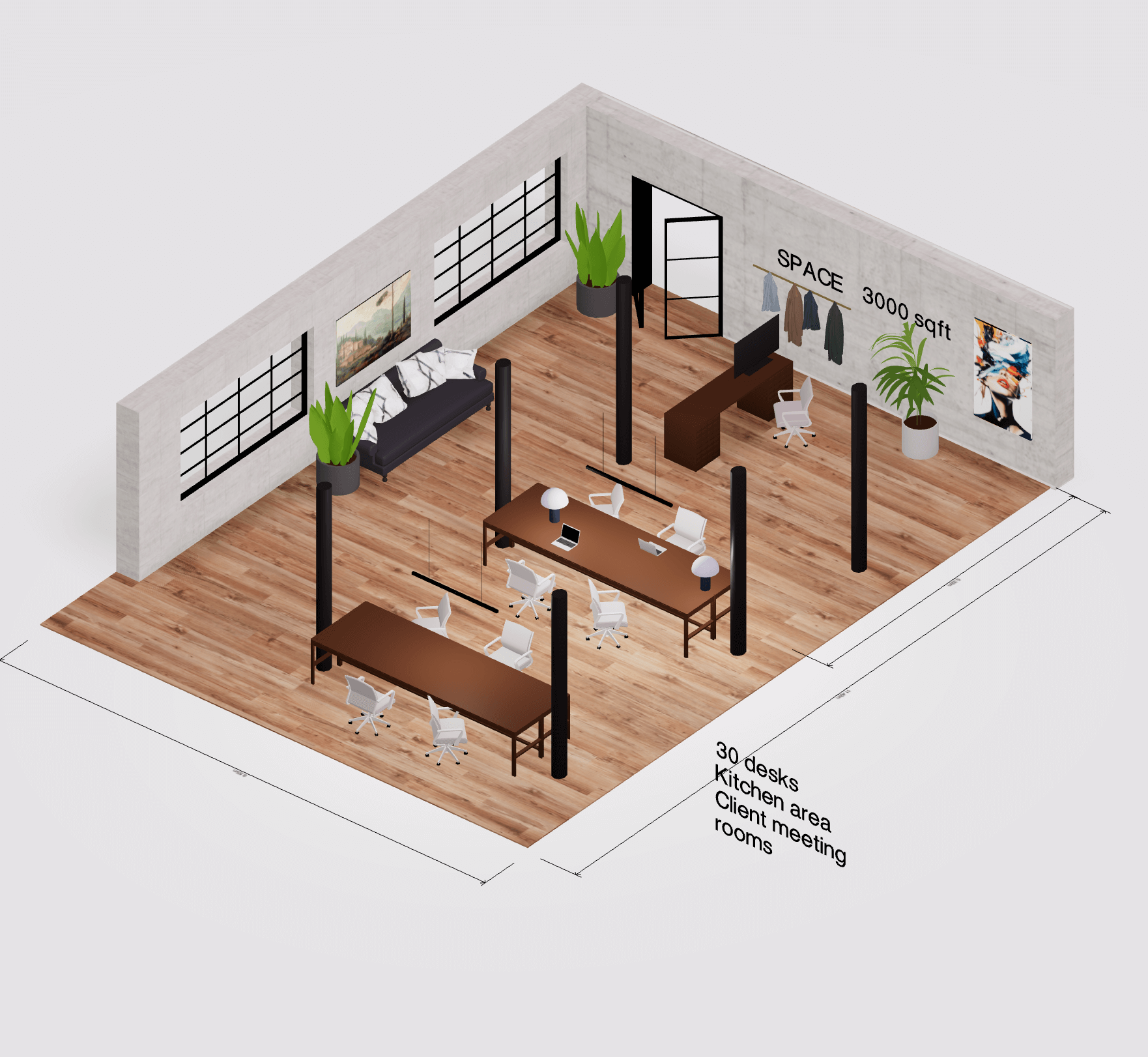 Office floor plan creator
Office floor plan creator



